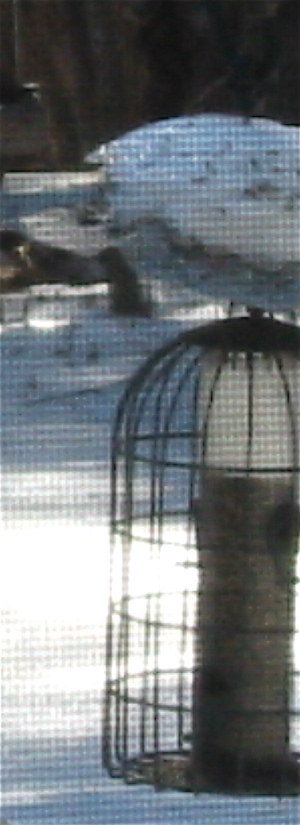-
Offer nesting materials early to further entice birds
Encourage birds to nest in your yard by offering them a good variety of nesting materials. Simple things you may likely already have around your home are fantastic, items which birds will use for nest building.
Got a pet? Cat and dog hair are some favorites, as are feathers, and decorative mosses. Spanish moss, sphagnum moss, raffia and aspen fiber are perfect nesting materials birds will go for! Brightly colored cotton yarns add to the mixture also helps grab their attention. One of the tricks is to have your nesting materials out before the nesting season begins, and in plain view where birds will easily see them.
Lots of kits and fun holders are available for wild bird nesting materials. The Birdie Bell shown here actually does triple duty. It will hold fruit in summer for the more exotic, migratory birds, and seed bells or suet in winter to help sustain your regular crew. Come spring, simply fill the bell with nesting material. An item like this with year round usage is a good value. But truth be told… you can use a simple suet cage to offer nesting materials as well. Even the mesh produce bags from the grocery store (like the kind apples come in) will effectively hold nesting materials that birds can access.
So aside from the birdhouses and feeders, be sure there is a fresh water source too. Be it a creek or bird bath, all species of wild birds are drawn to water. And don’t forget: start gathering materials now that will entice feathered friends to take up residence! Happy Birding!
- Ant Moats, Bird Book, Bird Feeder Pole, Bird Field Guides, Bird Nesting Materials, Bird Seed Trays, Birding Accessories, Misters and Birdbath Drippers, Nesting Material, Squirrel Baffle, Water Wiggler, Weather Guards
squirrel baffle serves as weatherguard too
The most effective way to foil squirrels and protect your feeders from their disruptive antics, is with a squirrel baffle. A quality baffle is a one-time investment that will save your birdseed and ultimately your money in the long run.
The best part about using a hanging squirrel baffle is the versatility. Some folks even use them as weather guards alone (like me) to protect feeders from the elements. Most will serve as weather guards throughout the changing seasons. Keeping snow in winter, rain, and direct sun in sweltering summer heat, from ever reaching and spoiling the bird food. This will also save money by keeping food fresher longer. Not to mention, squirrel baffles also protec
t feathered friends at your feeder while dining. Although this feeder hangs from a pole with a baffle in place, one is also used to protect the feeder. Check out that snow sitting on top!
Planning and proper placement are two key factors when setting up new baffles. One must always remember squirrels’ uncanny acrobatic and athletic abilities! The little furry critters can jump sideways almost 10 feet. So, the horizontal “launching point” must be taken into consideration. Don’t hang the feeder near anything they might be able to jump from sideways. Vertically speaking, be sure the bottom of the feeder is at least five feet from ground level.
All in all, a great investment for novice to advanced backyard birders. Sparing you much aggravation and headache should squirrels be a problem in the yard.
-
nesting materials for winter?
The hobby of attracting birds to our backyards offers varied and interesting methods in doing so. Protocol tells us to offer birds nesting materials in spring…because this is when nature tells them it’s time to mate and build nests. And this is another great way to entice and encourage birds to take up residence, especially due to the severe shortage in nesting sites. But many birds will use cotton and other materials to line roosting spots and nest boxes for cold winter nights as well.
This cotton nesting ball is wildly popular among Goldfinches, and since they’re more likely to stick around if you feed thistle seed throughout the year, you can help them further with nesting materials to keep warm at night.
Some popular nesting materials include cotton yarns and fibers, mosses that are used for decorative aspects in plants and flowers, feathers, aspen fiber and even dryer lint and pet hair are popular materials used in nest building.
This decorative wreath contains a mixture of nest materials that will entice and attract wild birds to your place. Refills are available, and it can be used year-round. Of course landscape plays an important role too. Preferably some mature trees, or dense shrubs like evergreens, and thickets will provide the perfect spots for your feathered friends to nest and raise their families. Don’t forget the fresh water too, as a birdbath will likely be the most popular spot in the yard!





